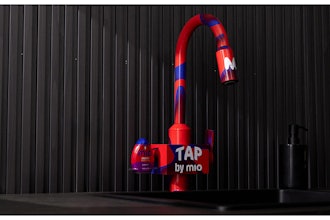Manufacturing facilities are notorious for maintaining a lean and mean operation. Everyone from CEO-level administrators to floor-level plant managers are looking for ways to increase efficiencies, cut waste, and streamline operations. Naturally, much attention is focused on keeping productivity levels high on the plant floor, but this sometimes comes at the expense of administrative office functions being overlooked or remaining stagnant.
Perhaps the leading time and money waster in office administration is the manual processing of employee time and attendance records—especially for larger facilities whose employees can number in the hundreds, if not thousands.
While many companies have invested heavily in Enterprise Resource Planning in regard to time and attendance recording, in many cases the data that drives these systems is curiously still handwritten out on paper and collected manually. Accuracy depends on the employee’s handwriting being legible, and timesheets not being lost in transition.
Once the paper timesheets are collected and transported to accounting, someone needs to manually key the timesheets into other systems for processing. This generally requires a manager to sit at a desk for hours, reviewing time off, and entering totals. This process inevitably leads to human error—from employees clocking in more than once to forgetting to clock out. This, in turn, leads to a large part of each payroll processing day being spent fixing errors. And if a time and attendance issue does arise and remain unknown until it’s too late, correcting the issue may not even be possible.
Accounting’s responsibilities continue with timesheets needing to be sorted, categorized and stored after they are manually entered into other systems. This requires physical storage of the documents which makes it very difficult to go back and retrieve time tickets if and when necessary. This holds true for documents stored for auditing purposes as well, which are often very difficult and time-consuming to retrieve. Many times, companies will store these documents offsite or in locations that pose difficulty accessing. Once the archives are located, then the specifically requested documents must be located and then reviewed. Bottom line: processing and storing paper documents is not the most efficient or reliable method for tracking real-time employment statistics and historical data.
All-in-all, it’s a time-consuming manual process that is neither efficient nor accurate and leaves virtually no chance of determining the actual costs to produce a product.
The Solution
Today’s cloud-based time and attendance technology enables managers to review and process information through web-based software applications. In addition to offering flexibility and convenience, cloud-based technology enables significant time savings, greater efficiency, and information updates in real time and available 24/7.
With the cloud, the challenges mentioned above are eliminated and administrative functions become automated. Through the use of new employee time clocks that use biometrics or employee proximity badges, employees are able to clock-in and out from different locations while delivering employee time data into one central online database. Plant managers welcome this innovation because it gives them the flexibility to track their employees’ time and attendance at their convenience from any Internet connection.
Other benefits to cloud-based time and attendance technology include the ability to immediately produce updated information—including seeing when an employee clocks in at the facility from anywhere in the world that has an Internet connection—and time records that easily integrate with major payroll software programs.
Let’s take a closer look at some of the challenges that cloud-based employee tracking software addresses.
Time and Attendance — A fully automated solution that reveals “who,” “what,” and “when” through better management, collection, and processing of employee time at work. Eliminates cumbersome paper clocking systems that result in inaccurate time reports, administrative errors, and increased labor costs. The system also automatically updates so that the legal risk of non-compliance is eliminated. Proven to increase efficiency, save time and money, and pay for itself in as little as a couple of months.
Time Allocation System — A Time Allocation System (TAS) tracks and records employee working time against specific jobs, projects or tasks by allowing employees to login to the specific duty they’re performing. This is a separate function from the Time and Attendance solution described above. The TAS data allows managers and supervisors to see which employees and departments in an organization are most efficiently using their workday thereby ensuring projects stay on budget and that fair compensation is awarded to the worker.
Access Control System — The bigger the factory, the harder it is to know if the right people are in the right places performing the right duties. An Access Control System allows managers and supervisors to regulate and record the movement of staff, sub-contractors, and visitors in real-time, at multiple entry points. It also synchronizes seamlessly with Time and Attendance and TAS.
Employee Self Service — An Employee Self Service system allows on-site and remote workers the flexibility to access their schedules and request time-off online which their managers can quickly accept or deny. Giving employees control of their own time management allows HR and supervisors to focus on their many other administrative duties. Real-time data is captured in the cloud and can be instantly accessed by both employees and managers alike.
Clocking-In Options — Today’s manufacturing facility demands adaptable timekeeping systems for today’s modern workforce. Various clocking-in options include web-based where employees register on the database and manage their time via the web, a biometric time clock that records information at the touch of a finger on a biometric scanner; text alert clocking that allows employees to text message their attendance time to a virtual mobile phone number; landline clocking that is ideal for mobile and remote workforces and that uses a landline phone; mobile clocking that gives employees the ability to clock-in or -out and onto tasks or projects on their mobile device; and a desktop biometric reader that provides the full functionality of a clocking terminal at a fraction of the cost.
To sum it up….
A state-of-the-art time and attendance system is now a necessity for every major industry, including manufacturing, energy, retail, government, healthcare, and pharmaceutical.
Take, for example, Chemprene, a Beacon, NY manufacturer of precision molded parts. Chemprene needed easy access to data that tracks down-to-the-minute time and movement of employees to improve their forecasting and budgeting. Instead of guessing how many employees may be needed at a particular time of year or for a particular project, managers now simply look at historical data. Reducing costly overstaffing helped Chemprene stay on budget while minimizing understaffing means Chemprene can stick to its philosophy of continual improvement.
Another example involves L’Oreal, now the biggest cosmetic brand in the world. L’Oreal manages 450 sites with their access control system, analyzing millions of entrances and exits per day, safe in the knowledge that their access control is the gold standard that so many companies use. Making sure employees have access to the correct parts of a building is of paramount importance as is the security of the premises in general.
These highly sophisticated and comprehensive solutions are easy to integrate and use and provide easily accessible management and reporting tools. They also appeal to today’s younger employees who are primarily looking for the ability to work remotely and control their schedule.
Peter Bellotti is Director of Sales at Mitrefinch USA.























